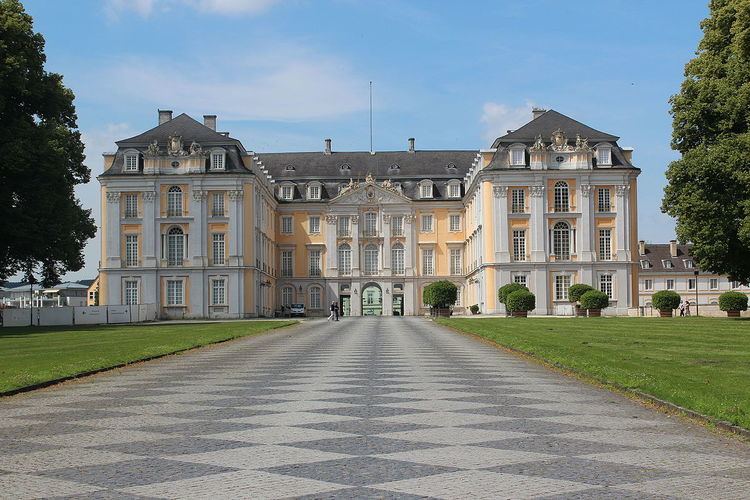Criteria ii, iv Phone +49 2232 44000 | Type Cultural Reference 288 UNESCO World Heritage Site inscription 1984 | |
 | ||
UNESCO region Europe and North America Hours Closing soon · 9AM–12PM, 1:30–4PMThursday9AM–12PM, 1:30–4PMFriday9AM–12PM, 1:30–4PMSaturday10AM–5PMSunday10AM–5PMMondayClosedTuesday9AM–12PM, 1:30–4PMWednesday9AM–12PM, 1:30–4PM Similar Max Ernst Museum, Phantasialand, Maulbronn Monastery, Jagdschloss Falkenlust, Lorsch Abbey Profiles | ||
Castles of augustusburg and falkenlust at br hl unesco nhk
The Augustusburg and Falkenlust Palaces form a historical building complex in Brühl, North Rhine-Westphalia, Germany, which has been listed as a UNESCO cultural World Heritage Site since 1984. The buildings are connected by the spacious gardens and trees of the Schlosspark. Augustusburg Palace (German: Schloss Augustusburg) and its parks also serve as a venue for the Brühl Palace Concerts. The Max Ernst Museum is located nearby.
Contents
- Castles of augustusburg and falkenlust at br hl unesco nhk
- The augustusburg and falkenlust palaces br hl unesco world heritage site
- References
The palaces were built at the beginning of the 18th century by the Archbishop-Elector of Cologne, Clemens August of Bavaria of the Wittelsbach family. The architects were Johann Conrad Schlaun and François de Cuvilliés. The main block of Augustusburg Palace is a U-shaped building with three main storeys and two levels of attics. The magnificent staircase was designed by Johann Balthasar Neumann.
The gardens were designed by Dominique Girard. An elaborate flower garden for an area south of the palaces was also designed, but it was restructured by Peter Joseph Lenné in the 19th century and turned into a landscape garden. Attempts to renovate the area have proven difficult, due to poor source material availability.
Falkenlust hunting lodge was designed by François de Cuvilliés and built from 1729 to 1740, in the style of the Amalienburg hunting lodge in the park of Nymphenburg Palace.
From shortly after World War II until 1994, Augustusburg was used as a reception hall for guests of state by the German President, as it is not far from Bonn, which was the capital of the Federal Republic of Germany at that time.
